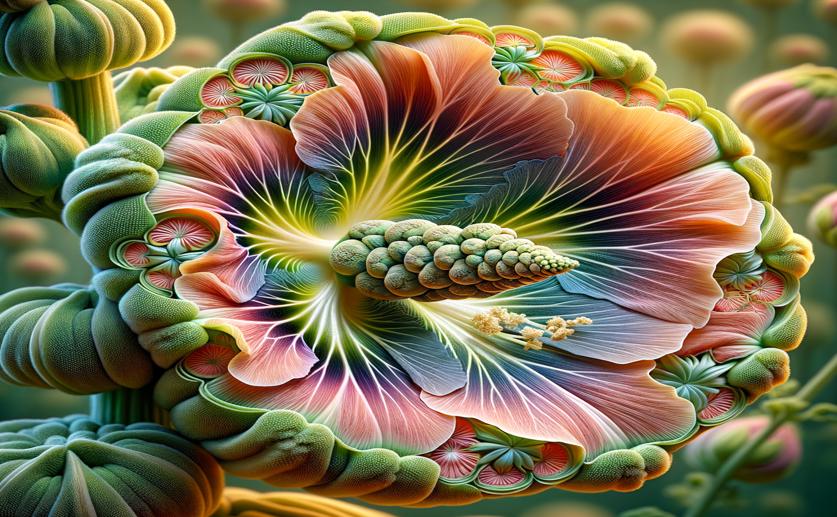
Key Genes Behind Flower Petal Formation in Hollyhocks Revealed
Greg Howard
15th June, 2024

Image Source: Natural Science News, 2024
Key Findings
- The study focused on the molecular mechanisms behind double-petal formation in hollyhock flowers, conducted by Sichuan Agricultural University
- Researchers identified 3,212 genes that were differently expressed between normal petals and stamen petaloid petals
- Key genes involved in plant hormone pathways and 56 important transcription factors were linked to the transformation of stamens into petal-like structures
References
Main Study
1) Transcriptomics analyses reveal the key genes involved in stamen petaloid formation in Alcea rosea L.
Published 14th June, 2024
https://doi.org/10.1186/s12870-024-05263-6
Related Studies
2) Homeotic transformation from stamen to petal in Eriobotrya japonica is associated with hormone signal transduction and reduction of the transcriptional activity of EjAG.
3) Transcriptome analysis during floral organ development provides insights into stamen petaloidy in Lagerstroemia speciosa.
4) A leaf-derived signal is a quantitative determinant of floral form in Impatiens.
Journal: The Plant cell, Issue: Vol 12, Issue 10, Oct 2000



 14th June, 2024 | Jenn Hoskins
14th June, 2024 | Jenn Hoskins